- Home
- Isaac Hooke
Mech 2 Page 2
Mech 2 Read online
Page 2
When the drones were gone, Rade increased his comm node range back to twenty meters, and his teammates’ indicators updated on his overhead map.
“They seemed in a hurry,” Lui commented drily.
“I thought you said they were on an ‘intercept’ path,” Manic said.
“I meant with the farm,” Tahoe said. “And their path roughly lined up with our own, anyway.”
“Keep moving,” Rade said. “Cyclone, have the HS3s spread out, keep one ahead and one behind at all times.”’
“Will do,” Tahoe said.
Rade arose and led the others around the cornfield, staying beneath the boughs of the trees that bordered it. He’d passed similar crop-laden fields on the way here, and did his best to circumnavigate them, as mechs left too obvious of a trail through such harvests.
“You know, am I the only one who expected to find rice paddies all over the place?” Manic said. “Instead, we get corn fields.”
“That’s a stereotype, you know,” Lui said. “That all farms in Asia hold rice paddies. If you’d bothered to check your embedded database, you would have known that was wrong. It was true to a degree in the past maybe, but not anymore.”
A roar overhead alerted Rade to an approaching jet. “Freeze!”
The team ducked underneath the boughs of the nearby trees and remained still as the jet passed.
“So now we have jets looking for us, too,” Lui said.
“We don’t know that they were looking for us,” Tahoe said. “Or that they were simply flying to the target site.”
Over the next hour, several more aircraft flew past overhead, and the team ceased all motion every time.
At the end of that hour, Rade was about to call a halt, having decided that it was time to lay low, when Tahoe once again reported: “Got drones coming in. These from in front and behind.”
“Police models again?” Rade asked.
“Police and military,” Tahoe replied.
“You know the drill,” Rade said. “Hide the HS3s. The rest of you, lay low. I intend to stay here when they’re gone. Until nightfall.”
“Switch to complete radio silence?” Lui asked.
“Not yet,” Rade said. “Drop transmission range to five meters.”
Rade took cover behind a thick series of bushes next to a thick trunk, and then gazed out at the adjacent farm. It was sheathed in some kind of barley crop.
The drones appeared, coming from both the north and south side of the barley field. Four in total, two per side. The northernmost possessed the hard edges of the familiar police designs, while the southern pair had the smooth surfaces associated with the Sino-Korean military.
The drones separated, and on each side began weaving back and forth above the barley field. The individual machines composing each pair moved in opposite directions, with each of them slowly closing toward the center of the field, where they would eventually meet their twins.
“They’re running a search pattern,” Manic said.
“We must’ve been spotted by one of those passing aircraft,” Lui said. “Either that, or by a Sino-Korean satellite in orbit. Maybe even a starship. Even though we stayed as close as possible to the trees, the boughs weren’t always shielding us.”
“The HS3s are picking up another two drone units,” Tahoe said. “These ones scanning the periphery of the farm. They’re slowly closing in on our position, following along the treeline.”
Rade checked his overhead map. The HS3s were deployed in the branches of two nearby trees, and most likely would evade detection by the incoming drones. The mechs, however, would probably get caught. Especially considering that the two red dots representing the drones were coming in on a direct line with the team, from both sides. If they broke cover now, they’d be spotted. If they stayed where they were, chances were they’d be spotted, too.
“Stay low,” Rade said. “And prepare to cut transmissions entirely on my order.”
“If they spot us…” Tahoe began.
“Then we’re going to have to shoot them down,” Rade finished. “All of them.”
“We’ll draw every drone and bomber in the region,” Lui said. “We’ll probably have to cut a path all the way to the coast.”
“We’ll deal with the consequences,” Rade said. “I want radio silence, effective immediately. If I open fire, reinstate transmissions.”
Rade shut down his comm node and switched to low power mode. Wanting to keep his profile as small as possible, he didn’t deploy the ballistic shield that was available to his left arm. However, he did clandestinely rotate his plasma cannon—called a stingray—into his right hand and aimed it up between the branches of the upper boughs, toward where one of the incoming drones would soon appear in his sights. He switched to the point of view of its scope and waited.
He still had the video feed from the southernmost HS3 piped into his vision, and with it tracked the incoming drone—a military octocopter model. It soon became visible on Rade’s plasma scope, and he centered the targeting reticle over the object and followed its advance.
The drone suddenly let out a loud whoop, and the two big turrets on its front side rotated toward his position.
Rade took that as proof he’d been spotted and squeezed the trigger.
His stingray erupted. Threads of purple light ripped through the air and smashed into the military drone, tearing it apart. He switched on his comm node; the callsigns of Lui, Manic and Tahoe flashed on the left side of his display as they activated their nodes and joined the network in turn.
Before he gave the order, Lui was already firing at the northernmost drone, and it crashed to the ground a moment later, leaving a flaming wreckage.
The other two military drones on the field immediately homed in on the positions of the fallen drones, and veered their way. The pair of police drones, meanwhile, turned around and fled.
“Manic, don’t let those police drones get away,” Rade said.
“On it,” Manic told him.
Rade rotated his ballistic shield into place and slid the plasma cannon over the notch in the top, then stepped from cover. He targeted the two military drones.
Bore holes registered in his shield as the military drones opened fire with their infrared lasers.
Rade returned fire, targeting both drones in rapid succession. Tahoe and Lui fired their stingrays at the same time, and together the three of them reduced the military drones to so much exploding debris. The shrapnel struck the barley below, tearing off ears like a scythe.
Rade glanced at his overhead map in time to see the two remaining red dots north of the field turn black.
“Got the fleeing police drones,” Manic announced.
“Good job,” Rade said.
“We’ll have company very soon,” Tahoe said.
Rade nodded. “We might as well make a transmission, considering we’ve already given away our position. Lui? Tell the Brass to send in the sub. Looks like we won’t be able to lay low until nightfall… we’re going to need an early pickup. And it’s going to be hot.”
Lui was the acting comm officer in the absence of Fret and Snakeoil—his Jupiter carried the extra communications gear necessary to boost the signal enough to reach orbit.
“Move a little to the north, first,” Rade said. “Let the Sino-Korean satellites believe we’re fleeing deeper inland.”
Lui hurried fifty meters north and released his transmission while still on the move. When he reached the hundred-meter mark, he shut down the broadcast and retraced his steps. When he returned, Rade ordered the team east once more.
They spread apart into a more defensive formation, separated by thirty meters each, forming the points of a zig-zag. Rade was in the middle, with Lui in front, Tahoe behind him, and Manic on the rear. They kept to the perimeters of the farms, not wanting to alert any cameras that might be watching for them on the different estates. They tried to stay underneath the cover of trees as much as possible, but some of the farms here abutted
against their neighbors, with only fences separating them, and Rade and his crew had to race out into the open more often than not. He had hoped to be lying low well before this moment—when the trees began to thin out—and then continuing after dark, but there was nothing he could do. The battle space had changed.
More aircraft approached in the distance. Rade could hear the distant roar. There were three of them, headed directly toward Rade and his team.
“Got three bombers,” Tahoe said.
“Maybe it’s just a coincidence that they’re passing directly over our position,” Manic said.
“Or they know precisely where we are,” Lui chimed in. “I’d say the latter, if I were a betting man.”
“Bring them down before they can release their payloads,” Rade ordered.
He replaced the stingray with his cobra mount, since the former would be ineffective at the current range, and aimed at one of the distant birds. His callsign appeared under the target as he acquired it; the callsigns of the others appeared under the two remaining birds, with Tahoe and Lui targeting the same one.
“Nicolas, are you able to locate the fuel tanks?” Rade asked. “And the AI core?”
“Affirmative,” Nicolas replied. “I have the complete blueprints to this particular model in my database. It’s a Dragon class bomber, version II A. Highlighting fuel tanks and AI core. The tanks are much less armored than the AI core, and I would recommend targeting them first, if you have a choice.”
He zoomed in, and called on Nicolas to help him with targeting. The AI moved his arm to keep the scope lined up with the target, and Rade made micro adjustments to aim the targeting reticle over one of the fuel tanks. He fired the cobra laser in rapid succession, and poked several holes in the tank, but the impacts didn’t cause a spark, not at that altitude. But the fuel was steadily leaking out.
He targeted the second tank and poked it full of holes, too. Then he aimed at the AI core and squeezed off several shots. It quickly became clear that his shots weren’t penetrating the armor. Eventually he would get through, but by then the bomber would have already begun unleashing its payload.
“You really think they’re going to unleash carpet bombs over such prime farmland?” Manic asked. “Rather than trying to capture us?”
“We’re riding mechs,” Rade replied. “They already know that the only way to capture us is to soften us up first. And what better way to do that than a few carpet bombs!”
“Our hulls are strong,” Tahoe said. “But not that strong.”
“Then we’re just going to have to shoot them down!” Rade said. “Team, sync your lasers with mine. We’re going to have to combine shots.”
Rade waited until the sync indicators turned yellow, and then he fired at the AI core of the first incoming bomber once more. That did something—the craft’s engines shut down and it began to glide. The cloud of spent jet fuel behind it ceased, and it rapidly lost altitude.
But the other two bombers were still in the game. And when Rade heard the high-pitched keening of dropping bombs, he knew it was too late to target them.
“Scatter!” Rade ran in a random direction, treading through the cereal crop around him. “Nicolas, calculate the blast zones!”
Nicolas would have been using its spare head mounted cameras to record the flight of the descending bombs; in moments, several circles covered the ground in front of Rade. They were bright red in the central regions, fading to orange, and then blue along the perimeters, to indicate regions of less severe damage.
Rade headed straight for the closest orange region, and made it onto the blue by the time the first impacts came.
He was thrown into the air by the resultant explosion, even though he resided within a mech, and landed on the ground several meters away. Around him, the air filled with dust, blotting out his vision.
He pulled up his damage report screen. His armor had suffered some blast damage, but otherwise his mech was intact. He checked the status of his team members on his HUD, and if the display was accurate, they, too, had all suffered only minor damage. They’d all made it out of the most severe impact zones.
He had them verbally report in anyway, and when the team confirmed they were all right, Rade proceeded north, toward the edges of the dust cloud. He waited a few moments before emerging, listening to the receding jet engines.
“Sounds like they’re not coming back,” Manic said.
“Of course not,” Tahoe said. “With the damage we caused to their fuel tanks, they’re going to be headed directly back to base for repairs.”
When the jet sounds barely registered on his external microphones, he emerged from the cloud and led the party once more. They assumed their previous zig-zag formation, with Lui in the lead, and passed through a small copse that offered cover, but soon were back out in the open, keeping close to the wire and post fences that demarcated the different farmer’s fields, and occasionally rushing across the gravel roads between them.
It wasn’t long before drones appeared on the distant horizon behind them.
“It’s times like this that you start wishing there was a prolonged lunar eclipse,” Manic said.
“Darkness wouldn’t help us,” Lui said. “Our thermal masking abilities have limits. At the speeds we’re moving at, we’d definitely leave an infrared footprint. Enough to register on night vision.”
“Then we’d walk slower,” Manic said.
“And what about LIDAR?” Lui said. “How do you expect to avoid that?”
“No comment,” Manic said.
More drones appeared past the outskirts of the farm ahead, forming a long line that blocked their way forward. Military models like those to the south: eight-bladed octocopters.
Rade spotted a farmhouse to the west amid the current field, along with several other outbuildings.
“Take cover behind those outbuildings,” Rade said. “It looks like we’re going to have to fight.”
3
Rade hurried onto the farm, and dove between two silos that protected him from the drones on either side. Tahoe took cover behind a nearby farmhouse, while Manic and Lui assumed positions on either side of the sprawling farmhouse: a blue-painted, gable-roofed affair. A guest house offered the latter pair protection from the rear, while Rade’s southernmost silo protected Tahoe’s flank.
Pieces of the northernmost silo broke away as the incoming drones fired missiles at Rade’s position. He was forced to leave cover.
His missile alert sounded, and he fired his Trench Coat. Thirty-four metal pieces launched from nozzles lining the waist region of his Jupiter; each piece was equipped with a small amount of propellant, and utilized 360-degree homing radar to seek out the incoming rockets.
He dove behind the eastern fringe of the guest house as the rockets exploded prematurely behind him. He swung his ballistic shield into place, and aimed his stingray over the notch in the top. There were too many drones to target.
“Nicolas, fire at will,” Rade ordered.
The AI took control of the stingray, and unleashed plasma bolts with a precision that only a machine could. The weapon swiveled to and fro, targeting the closest octocopters. The machines exploded constantly, and shrapnel from the detonations sprayed the neighboring drones, taking down even more of them.
The other three Jupiters also unleashed hell on the northernmost drones, but Tahoe quickly turned his attention to the south when missiles began to strike the buildings behind them.
Equestrian tanks rolled onto the field, and Sino-Korean Centurion knock-offs followed behind them, using the armored vehicles for cover. The Equestrians fired plasma cannons at the outbuildings; wooden planks struck Rade’s ballistic shield as portions of the guest house broke away beside him. The Centurions unleashed their laser rifles, causing bore holes to appear in the still standing areas of the building.
Rade drew his weapon in to conceal his position and proceeded west, and when he reached the far side of the outbuilding, he took control of his weapon
and aimed past the edge. He targeted the Equestrians, and took down three in a row before his missile alarms went off. He launched his Trench Coat again and retreated from the edge; the corner of the building exploded behind him.
He was sent flying forward by the shockwave and landed face first in the ground; he turned onto his back and aimed at the sky in time to meet the drones that crowded over the area from the north and south. He returned control to Nicolas and the mech unleashed hell with the stingray.
Drones dropped all around him. He had soon formed a defense bulwark around his position from their bodies so that when the Equestrians rounded the damaged building, and the Centurions crested its rooftop, Rade had protection already in place. Tahoe, Manic and Lui had built similar defenses from the wreckages of their foes.
The drones momentarily ceased their attack, leaving the sky free above, allowing Rade to redirect his stingray at the Centurions; in only a few moments he had swept them clean off the building. Their debris clattered to the ground in front of him.
He aimed past the edge of the pile of drones beside him, at the closest Equestrian, but his stingray clicked off—overheated. Rade swiveled his cobra mount into place instead.
The Equestrian fired, and Rade swung his shield into place in time to deflect the shrapnel caused by the plasma strike. Another Equestrian fired on the same side and this time the bolt got through the pile of bodies, and struck Rade’s shield. The anti-laser/plasma coating absorbed much of the blow but it still registered some damage, falling to eighty percent integrity.
Rade unleashed his cobra in rapid succession, drilling several holes into the armor of the attacking Equestrian, until he penetrated through to its power core. As the tank shut off, he targeted the next Equestrian behind it, aiming for the same spot. It was a known weakness of these models.
When that Equestrian switched offline, he swiveled around to face the Equestrians on the far side, but Lui had already taken care of them.
More drones flew into the sky overhead, this time over Lui and Manic’s location, and Rade helped take down the attackers with his cobra. When they were gone, he swiveled his mount toward Tahoe’s position; there were no drones in the air above him, but he was surrounded by five Equestrians. He had dropped quite low, the cover he had formed from the fallen drones mostly blown away.

 Warden 2
Warden 2 Devastator
Devastator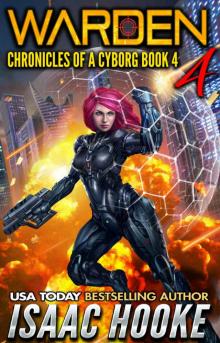 Warden 4
Warden 4 Emperor
Emperor Mech
Mech Conqueror
Conqueror Fighter
Fighter The Forever Gate Ultimate Edition
The Forever Gate Ultimate Edition Defiler
Defiler Mech 2
Mech 2 Warden 3
Warden 3 Warden 1
Warden 1 Mech 3
Mech 3 Forerunner
Forerunner The Alliance (AI Empire Book 2)
The Alliance (AI Empire Book 2) Breaker (Monster Tamer Book 1)
Breaker (Monster Tamer Book 1) Bender of Worlds
Bender of Worlds The Pendulum Swings (The Forever Gate Book 8)
The Pendulum Swings (The Forever Gate Book 8) The Link
The Link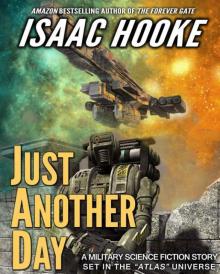 Just Another Day
Just Another Day Star Warrior
Star Warrior Alien War Trilogy 1: Hoplite
Alien War Trilogy 1: Hoplite Battle Harem 3
Battle Harem 3 The Ethan Galaal Series: Books 1 - 3
The Ethan Galaal Series: Books 1 - 3 Reloaded
Reloaded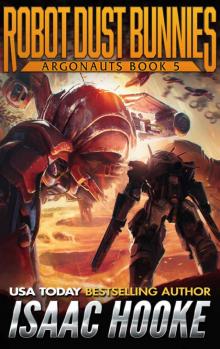 Robot Dust Bunnies (Argonauts Book 5)
Robot Dust Bunnies (Argonauts Book 5) Battle Harem
Battle Harem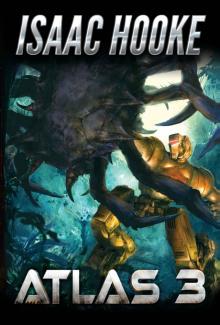 ATLAS 3 (ATLAS Series Book 3)
ATLAS 3 (ATLAS Series Book 3) Argonauts 2: You Are Prey
Argonauts 2: You Are Prey Worlds at War (A Captain's Crucible Book 5)
Worlds at War (A Captain's Crucible Book 5)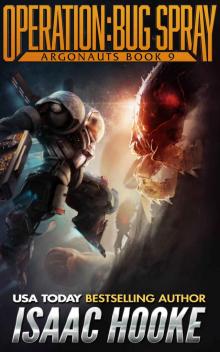 Operation: Bug Spray (Argonauts Book 9)
Operation: Bug Spray (Argonauts Book 9) Battle Harem 2
Battle Harem 2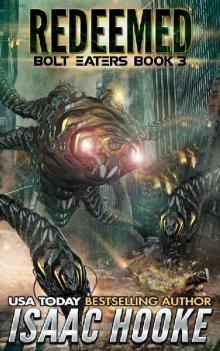 Redeemed (Bolt Eaters Trilogy Book 3)
Redeemed (Bolt Eaters Trilogy Book 3) Atlas
Atlas Argonauts 1: Bug Hunt
Argonauts 1: Bug Hunt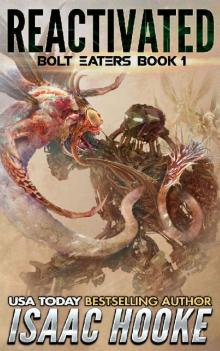 Reactivated (Bolt Eaters Trilogy Book 1)
Reactivated (Bolt Eaters Trilogy Book 1)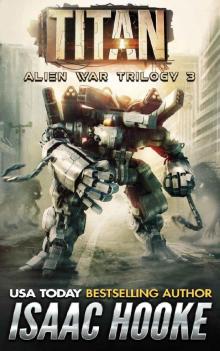 Alien War Trilogy 3: Titan
Alien War Trilogy 3: Titan Flagship (A Captain's Crucible #1)
Flagship (A Captain's Crucible #1)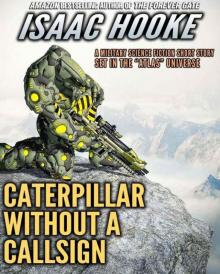 Caterpillar Without A Callsign
Caterpillar Without A Callsign The Forever Gate
The Forever Gate He Who Crosses Death (Star Warrior Quadrilogy Book 3)
He Who Crosses Death (Star Warrior Quadrilogy Book 3) Reforged (Bolt Eaters Trilogy Book 2)
Reforged (Bolt Eaters Trilogy Book 2) Refurbished
Refurbished Reloaded (AI Reborn Trilogy Book 2)
Reloaded (AI Reborn Trilogy Book 2) He Who Crosses Death
He Who Crosses Death Explorations: First Contact
Explorations: First Contact Planet Killer (A Captain's Crucible Book 4)
Planet Killer (A Captain's Crucible Book 4) Quantum Predation (Argonauts Book 4)
Quantum Predation (Argonauts Book 4) Clandestine-IsaacHooke-FreeFollowup
Clandestine-IsaacHooke-FreeFollowup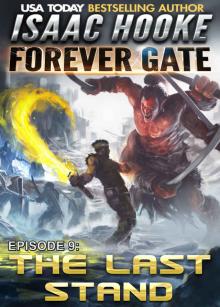 The Last Stand (The Forever Gate Book 9)
The Last Stand (The Forever Gate Book 9) City of Phants (Argonauts Book 6)
City of Phants (Argonauts Book 6)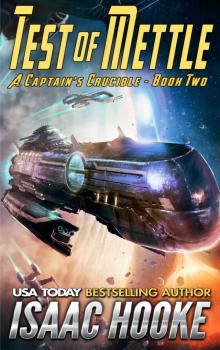 Test of Mettle (A Captain's Crucible Book 2)
Test of Mettle (A Captain's Crucible Book 2)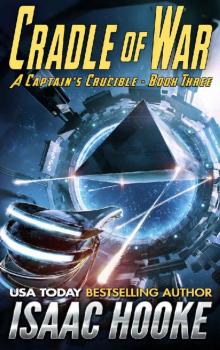 Cradle of War (A Captain's Crucible Book 3)
Cradle of War (A Captain's Crucible Book 3) Rade's Fury (Argonauts Book 7)
Rade's Fury (Argonauts Book 7) Rebirth (The Forever Gate Book 6)
Rebirth (The Forever Gate Book 6) The Forever Gate Compendium Edition
The Forever Gate Compendium Edition Mechs vs. Dinosaurs (Argonauts Book 8)
Mechs vs. Dinosaurs (Argonauts Book 8) Alien War Trilogy 2: Zeus
Alien War Trilogy 2: Zeus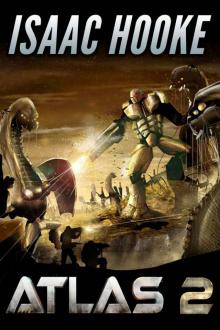 ATLAS 2 (ATLAS Series Book 2)
ATLAS 2 (ATLAS Series Book 2)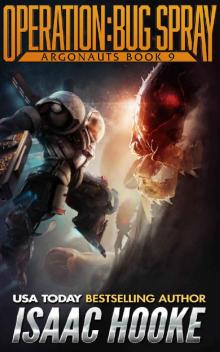 Operation_Bug Spray
Operation_Bug Spray